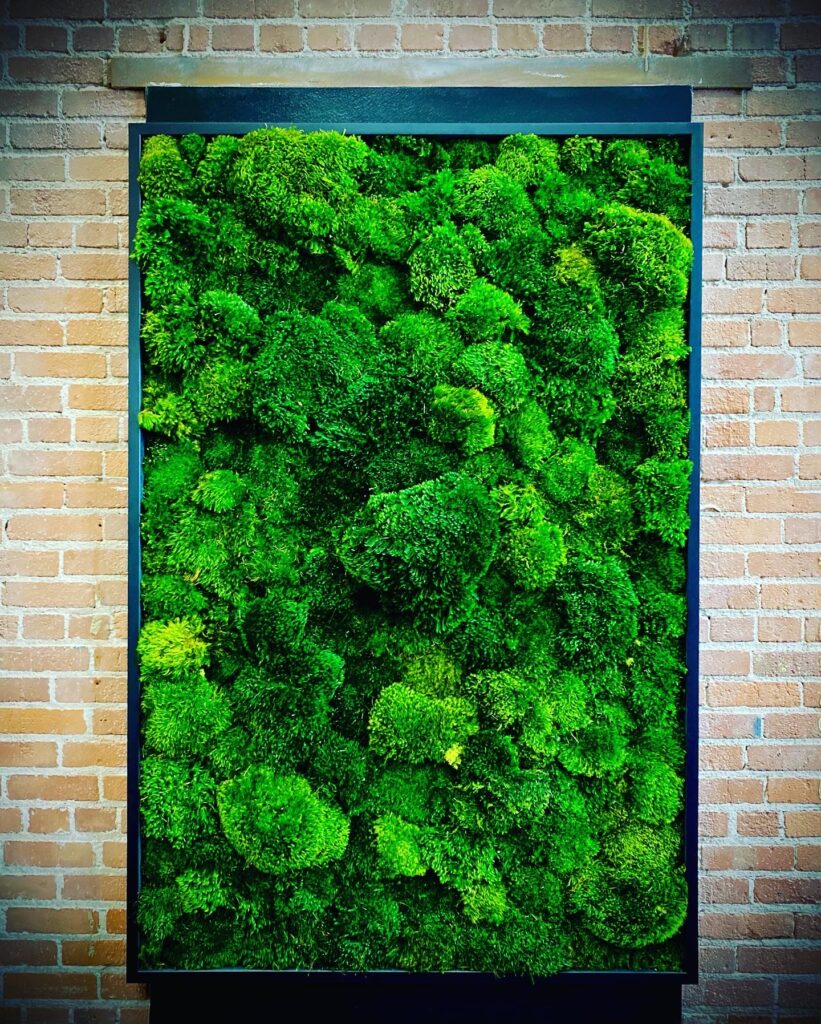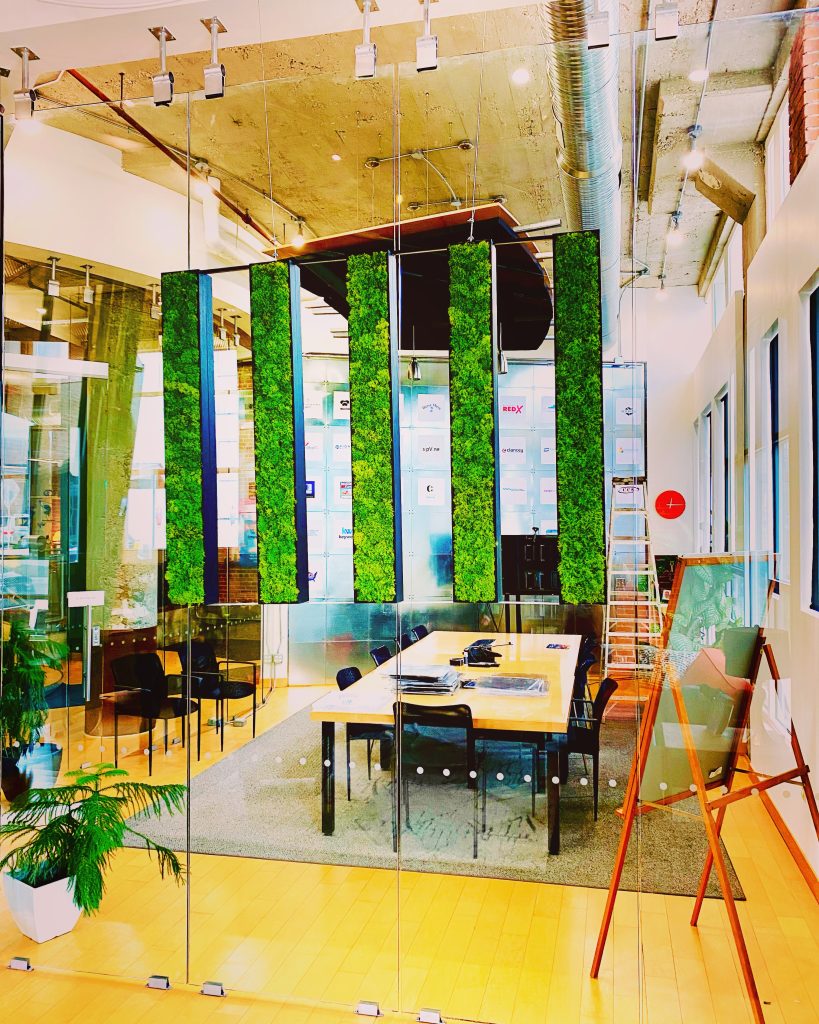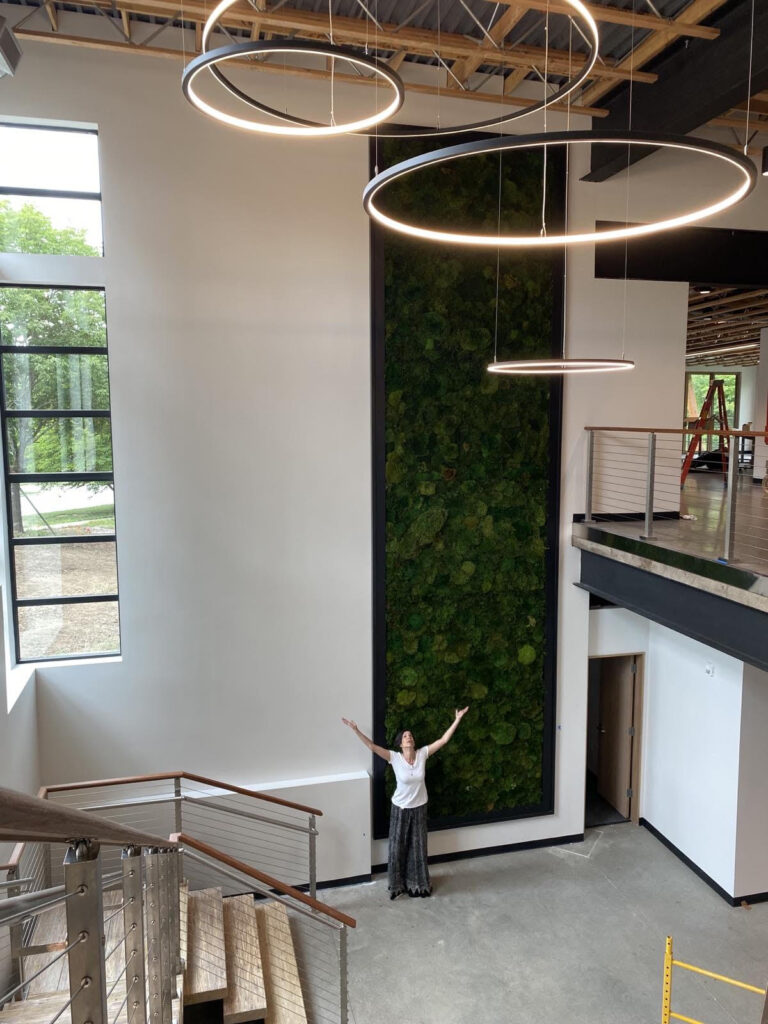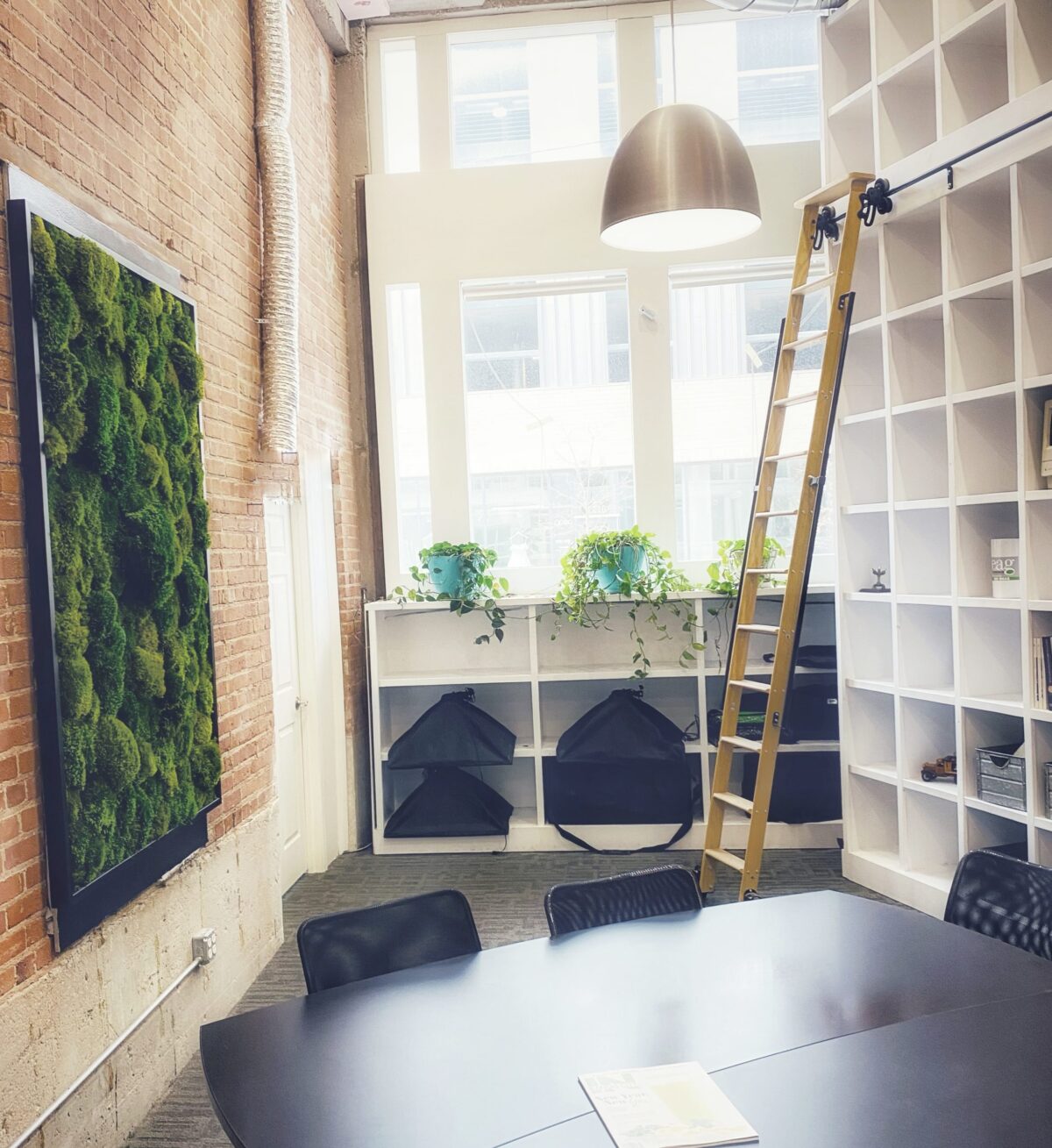
There are lots of theories and speculation on the new workspace, following the pandemic, and what people want in their workspace. But how do we differentiate between wants and needs when we now know that our environments have such a significant bearing on our wellbeing, our productivity, and even our mood?
It has been more than a hot minute since we have created an article and there was a reason for that.
We have been reading, researching, listening, and frankly, waiting as time and research were both crucial to the creation of this article.
Rather than delineate or advocate the “right” workspace design, we will focus on what employees are expressing, what architects, designers, and interior artists have shared with us regarding what works well, what is in high demand in workplace design, and what people want and need to feel good the moment they cross the threshold of the workplace.
What We Have Learned
We’d be remiss if we did not address one of the most important results of the pandemic, “The Great Resignation” as it is far from over and the numbers should give all employers pause.
“Turnover is costly. The Work Institute estimates the cost of turnover is 33% of a worker’s annual salary, while others estimate the cost to be 1.5 times an employee’s salary. But most turnover is preventable. We found that for employed Americans who plan to resign in the next 10 months, the desire for better working conditions topped their list of reasons for wanting to resign, followed by burnout, higher pay, desire to switch careers or start a business, and flexible/remote work options.”
Why Employers Should Fight For Employee Satisfaction During The Great Resignation, Debora Roland, Forbes Councils Member
It seems clear that the pandemic was a reminder to all of us that life is short and that quality of work and home life play a role in health and happiness and making a change, whether to a new organization or even a completely new career seems to have become a question of, “if not now, when?”
The Why of Resignations
We looked at a number of different surveys concerning employee satisfaction and there are some commonalities that appear in every study, across the globe. Employees are stressed. They are stressed by workload and by the pandemic itself and those stress levels are heightened for employees over 40 who may be dealing with personal health issues and family care issues along with their work responsibilities. Employees express feeling a lack of support from employers and want flexibility in not only their schedules but also in the actual workspace and workstations.

Employees also feel isolated.
“You can point to a host of reasons why employees might experience loneliness that may or may not directly relate to the workplace, but Cigna CEO David Cordani’s comments on the root cause of loneliness and stress are worth exploring. As noted in the EBN article, Cordani identifies three main contributing factors: “increasing use of technology, more telecommuting and the always-on work culture.”
Will Return to Office Make Workers Feel Less Lonely? Ryan Daily, Workforce Strategy
It is clear that it is not working from home that is the strongest driver of feelings of loneliness and isolation but rather the demands of technology in terms of information processing and that technology has created an “always-on” expectation from employers and employees themselves. When simply picking up your phone to read a text from a friend means also reading the constant stream of emails, it is challenging for all of us to establish boundaries between work and our lives outside of work.
With resignations at record numbers (a record 4.5 million Americans resigned in November 2021 alone), we are buoyed by the term, “The Great Renegotiation” as that term portends great possibilities in recruitment, job satisfaction, and retention. Yes, many employers espouse a healthy work-life balance and have implemented mindfulness programs, the continuous influx of information as employees work to keep current in their fields by reading and engaging on social media (often for work purposes), the workload itself has become hard to manage and the amount of information difficult to process. It is vital to remember that we have experienced more technological advancements in the past 50 years than in the previous 20,000 years (there are very real psychological limits on our capacity to process information) and there may be a great deal employers can do to assist employees in mitigating stress and supporting attention restoration and overall wellbeing.

Practicing Mindfulness is Not Enough
From yoga sessions in the workplace to employee wellness retreats, employers recognize the need for wellness amongst employees and are aware of the effect it can have on everything from productivity to morale.
“However, experts have taken pains to point out that it’s not enough for employers to simply offer the chance to participate in wellness activities. Rather, they must actively cultivate and promote an all-encompassing culture of wellness. Offering mindfulness workshops and flexible working while also subjecting workers to long workweeks and rewarding workaholism only sends mixed messages and papers over the underlying issues that negatively impact employee health.”
The importance of wellbeing in the workplace, The Office Group.
So it seems that employees want more than lip service or a wellness retreat. They want a manageable workload and a destination workspace that offers the kind of feel that makes one want to go to work for that important meeting. Even though many employers have adopted a flex schedule that does not require employees to be physically in the office from eight in the morning until well after five in the evening, the actual workplace has the greatest bearing on employee perception of culture as well as their motivation, creativity, and productivity.
“An inviting workplace—coupled with the flexibility to use it or not—can be advantageous to an existing workforce, but it can also have the added benefit of fostering an inspiring and trust-based culture that attracts new industry talent. The power of a well-designed space cannot be overstated.”
Back to Business: Re-Rethinking the Open Office, Robert Marshall writing for Buildings.com
Creating the Inviting Workplace: A Multitude of Solutions
This is where it starts to get fun. There are a multitude of solutions, many of them cost-effective (not only in terms of capital output but also employer savings) that can enhance workspaces and reinvigorate employees and clients alike. “Even small investments which involve very low up-front costs, such as providing employees access to ample daylight, natural views, and plants can provide healthy returns. For instance, “integrating quality daylighting schemes into an office space can save over $2,000 per employee per year in office cost,” according to a peer-reviewed paper by Terrapin Bright Green LLC,” as Emily Gallagher notes in her article for Propmodo.
Creating designated and well-designed quiet spaces for focused work, along with flexibility in furnishings and workstations are just two ways employers can demonstrate they are listening to employee needs. Following Neocon, held in the fall of 2021 (to be held again in June of 2022) there were some design solutions that quickly bubbled to the surface–like rounded corners and outdoor spaces that not only soften a space but also enhance wellbeing and productivity. Lauren Grenshaw, writing for Space.net does a superior job of highlighting these affordable workspace improvements. She provides 10 options for responding to employee wants and needs and we highly recommend you take a moment to review her list.
Also on the list of employee wants and needs are site lines (across the room and to the outdoors) air quality, resimercial design, and acknowledgment of neurodiversity in design. Biophilic design actually provides solutions for all of these.
“For those new to the concept of resimercial, it’s a design philosophy that combines aspects of commercial and residential spaces to create a more comfortable feel. It makes sense, then, that after two years of working from home, the office is trying to adapt to have more elements of home inside.
What You Can Expect to See from Commercial Interior Design in 2022
Sustainability continues to be a core focus as design trends point towards a more residential feel. Nick Boever for Commercial Integrator

We have seen an uptick in requests for moss walls and panels for traditional workspaces as well as home offices.
“When the pandemic hit, we were concerned and assumed that greenery would be one of the first things to cut, but we’ve mostly seen the opposite,” they say. “Companies are working to create ‘destination spaces’ and improve interior spaces by incorporating nature.”
Kasey Riley and Morten Klinte, The Fat Plant Society as quoted by Lisa Moyer writing for Johnson County Lifestyle Magazine Design Issue March 2022.
Biophilic design, in the form of moss interior design, also checks off the boxes for acoustic needs, neurodiversity needs, vertical dividers, and yes, even air quality as real moss (that does not require any maintenance) actually cleans the air of VOCs (volatile organic compounds)

More Good News
In addition to these affordable changes and enhancements to workspaces, there is more good news in that employees want to be together for important meetings and strategic meetings. Not only do employees care about one another, but they also care about sustainability and the environment–from their own workspace and workstation environments to sustainability practices writ large.
Employees who feel the culture of their organization is aligned with their own values and ethics look forward to being together and are energized by time well-spent with their colleagues. And there are ways to meet the need for human connection while simultaneously acknowledging the importance of what employees value.
“Creating practical environmentally conscious activities can provide more interactive fun for employees, Wirtenberg said, suggesting that companies lean into their young workforce and create competitions with rewards.”
5 ways to build a sustainability-focused work culture that aligns with employee values, Lily Katzman for INSIDER.
And since we are in this moment of renewed appreciation for one another as well as our beautiful planet, we may just have the opportunity to improve the quality of our conversations. Taking a moment to truly engage and listen in the ideal workspace is conducive to better overall communication. As David Brooks aptly noted in an Op/Ed piece for the New York Times, assisting others in being authors and not just witnesses matters. Employees thrive when they are trusted with flexibility in schedules, workspaces, and work experiences and as it turns out, they are often even more productive as a result.
“The important part of people’s lives is not what happened to them, but how they experienced what happened to them. So many of the best conversations are not just a recitation of events. They involve going over and over an event, seeing it from wider perspectives coating it with new layers of emotion, transforming it, so that, say, an event that was very hard to live through is now very satisfying to remember.”
Nine Nonobvious Ways to Have Deeper Conversations, David Brooks, The New York Times.
And an awful lot has happened. And is continuing to happen.
Biophilia Changes Perception
Lastly, employers and employees alike have embraced the concept of biophilic design and recognize the immense value of biophilia in the workspace. We all want our workplace environment to be as comfortable, pleasant, and rejuvenating as it possibly can be. And with the added benefit of reduced sick days, adding biophilia can actually save employers up to $3K annually.
So in a sense, with a relatively small investment (real moss walls run roughly 1/3 the cost of a living plant wall), introducing moss walls, moss designs, succulents, and other sturdy indoor plants such as the ZZ plant, employers can actually save up to $6K annually (combining the savings on higher maintenance plants with the reduced sick days’ figure).
And biophilia truly does change perception. We hear this from both our commercial and residential clients and their employees that a space replete with greenery just feels good.
We like to think that we can continue to learn a great deal from the challenges of the past two years.
And that we will all reap the benefits of greener, more sustainable workspaces as well as more fruitful conversations.
As Always, Yours in the Love of All Things Green,
Kasey & Morten/The Fat Plant Society
Please feel free to contact us using the contact form on our Website or DM on IG for more information and to purchase products.

